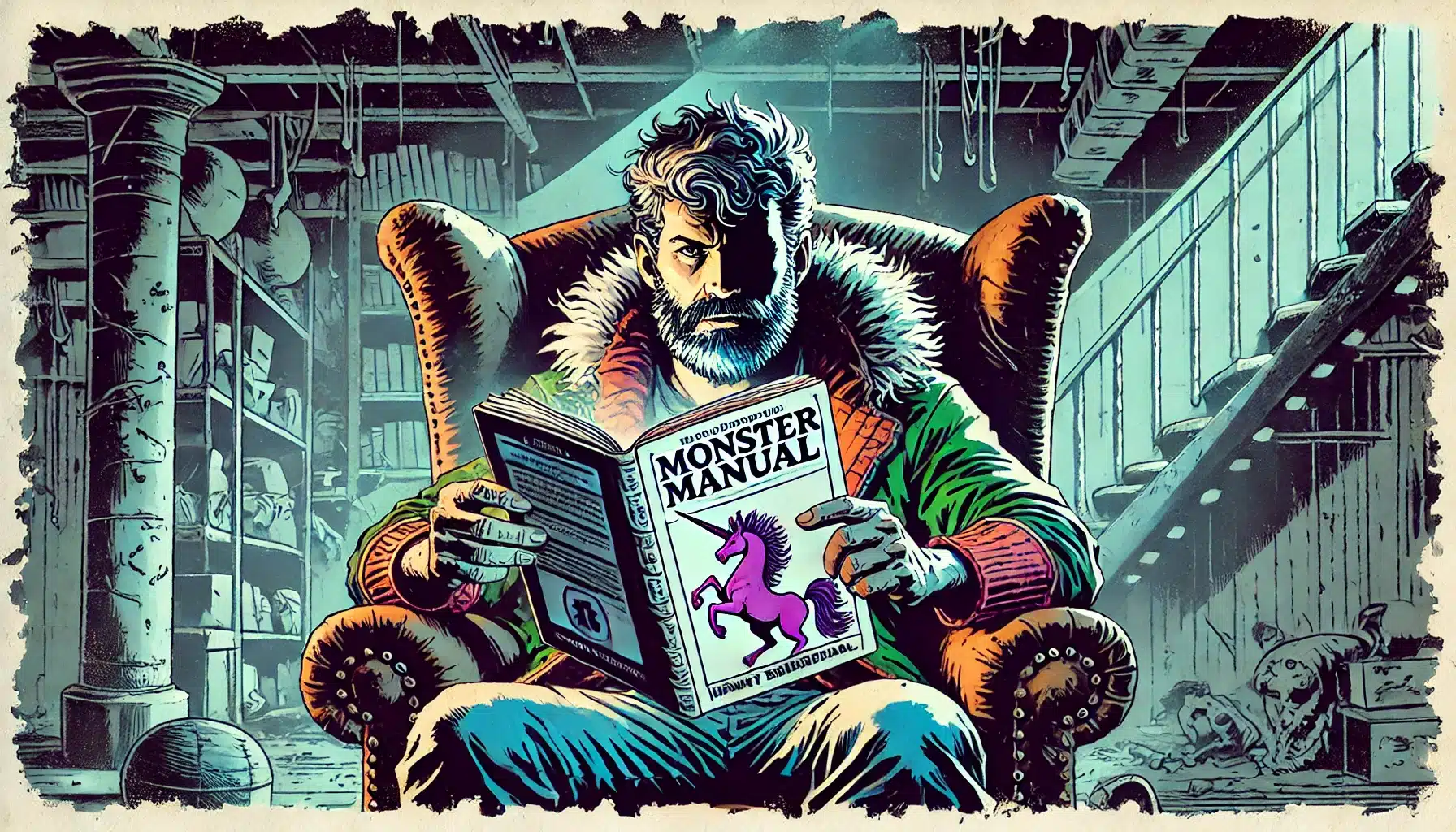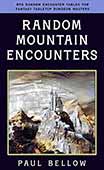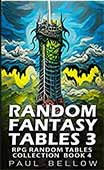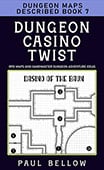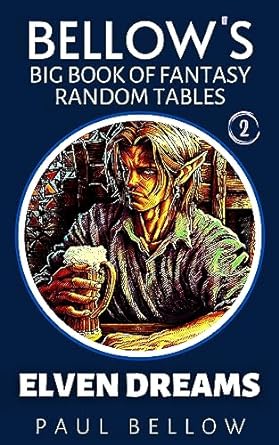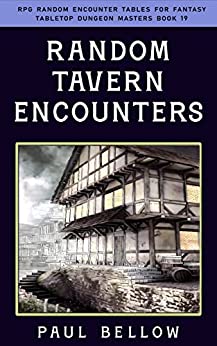Meet Dave the DM. Imagine an old warrior from a forgotten realm of tabletop gaming. With more years behind the screen than most of us have been alive, Dave is a legend in his own right—a Dungeon Master with an iron grip on his campaigns and a heart full of dice. He’s grumpy, sure, with a skeptical eye aimed squarely at modern trends. Yet, beneath that grizzled exterior, lies a genuine love for the game that started it all. Dave’s not a fan of many of the newfangled ideas that have swept through the D&D community like a trendy wildfire. To him, they’re distractions, glittering in the faces of new DMs like fool’s gold.
At the heart of Dave’s grumpiness is the struggle that many DMs face: balancing personal creative visions with the ideas that players bring to the table. In Dave’s view, letting players write the story is akin to letting a crowd of bards compose an epic ballad—it might work sometimes, but it’s more likely to devolve into a cacophony. This guide, steeped in old-school wisdom but seasoned with practical tabletop RPG advice, dives deep into his insights. We’ll explore how to weave player input into the fabric of a campaign without letting it unravel into chaos.
Many a DM has lost themselves in the murky waters of player-driven storytelling. They begin with grand visions, only to find themselves bobbing aimlessly on a sea of conflicting ideas and tonal inconsistencies. Dave, with his trusty battle-worn DM screen, has weathered these storms countless times. He’s seen fledgling DMs turn what could have been epic campaigns into jumbled narratives, all because they forgot who was captaining the ship.
But let’s not mistake Dave’s grumpiness for rigidness. He’s not advocating for player ideas to be thrown out like bad loot from a dragon’s hoard. No, the key lies in balance. The trick is to harness the energy and creativity of player input without losing the reins on the story. Dave’s lived this balance for decades—allowing players to feel like they’re part of the story while steering them through a campaign that is both coherent and exciting (or reading his favorite D&D novels…)
So, as we delve into these tales and techniques, remember: it’s all about blending. It’s about crafting a story that feels alive, engaging, and, most importantly, fun for everyone involved. Let’s unravel the mysteries of using player ideas wisely, from the grumpy but wise perspective of Dave the DM.
The Problem with Letting Players “Write the Story”
In today’s D&D landscape, player-driven storytelling is all the rage. It’s like the hip new tavern everyone wants to visit. The idea is simple: let players shape the narrative. But to old-school DMs like Dave, this trend raises an eyebrow or two. Why, you ask? Well, the answer is layered like an ogre’s onion.
Try my AI Tabletop RPG generators...and an extensive library of content!
First off, when players have too much control, campaigns can quickly become unfocused. Imagine a story as a river, flowing with purpose. Now, picture a dozen tributaries—each a player’s idea—suddenly trying to merge into the main stream. It becomes a chaotic mess of directional changes, each demanding attention and shouting louder than the last.
Then, there’s the issue of tone. Dave has seen campaigns that started serious—perhaps a tale of epic heroism—turn into slapstick comedy overnight because the players couldn’t resist steering the narrative towards the ridiculous. Consistency goes out the window faster than a rogue stealing gold. This tonal whiplash can frustrate DMs, who feel like their carefully laid plans are being hijacked by every whim and whimsy.
Furthermore, as DMs feel like they’re merely passengers on a chaotic ride, their motivation can wane. It’s the equivalent of trying to conduct an orchestra with every musician playing a different tune. The result? A cacophony that drowns out the story the DM wanted to tell.
Lastly, giving players the wheel can sometimes lead to a campaign that feels directionless. Like a boat without a rudder, it drifts from one player-led subplot to the next, never quite finding its true course. DMs become jugglers, trying to keep all the balls in the air, often at the cost of the story’s integrity.
⚔️ Fantasy RPG Random Tables Books
Make life as a Gamemaster easier…
If you play Dungeons & Dragons, Pathfinder, or other fantasy RPGs, this
RPG random tables series
is packed with encounters, NPCs, treasure, and more. Available in eBook or print—either way, you’ll have a wealth of adventure ideas at your fingertips.
In Dave’s eyes, while player-driven campaigns sound appealing in their promise of collaborative storytelling, they often falter when the balance isn’t right. Let’s dive deeper into why Dave harbors such skepticism for these freewheeling narratives.
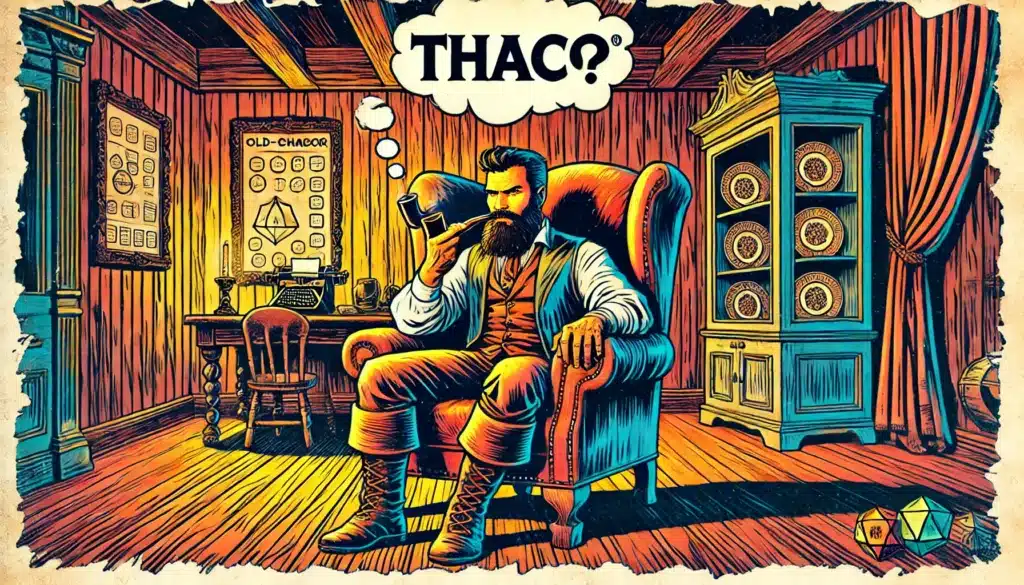
Why Dave Hates “Player-Driven” Campaigns—And Why He’s (Partly) Right
For Dave, the quintessential grumpy Dungeon Master, player-driven campaigns often feel like leaving the tavern door wide open during a storm. It invites a whirlwind of chaos inside, the kind that can unmake carefully woven tales. The dangers are real, and Dave’s not shy about pointing them out.
- 1. Conflicting Backstories – Players come with baggage, and I don’t mean their backpacks full of rations. Everyone wants their character to be the hero of their story, leading to backstories that clash rather than complement.
- 2. World-Breaking Requests – A player might suggest the existence of a magic shop in every village, devaluing magic itself and unraveling the world’s logic faster than a wizard without a spellbook.
- 3. Overpowered Homebrew Demands – Sometimes players want to wield weapons of unimaginable power, forgetting that balance is the thread that holds the world together.
- 4. Lack of Immersion – Too many cooks spoil the broth, or in this case, the immersion. Each player’s vision can fracture the unified world the DM strives to maintain.
- 5. Narrative Disruptions – When players steer the ship, they can easily plot a course into storytelling rocks, derailing the narrative’s natural flow.
- 6. Unrealistic Expectations – Players, caught up in the thrill of control, may demand narrative elements that don’t fit the game’s setting, like demanding a sci-fi twist in a medieval fantasy game.
- 7. Creating Plot Holes – Player-driven alterations often ignore previous campaign lore, leaving gaping plot holes that can swallow the story’s consistency.
- 8. Imbalanced Challenges – When players dictate too much of the story, they might inadvertently design challenges that are either too easy or impossibly hard.
- 9. Unresolved Subplots – With each player pulling in different narrative directions, subplots can multiply and remain unresolved, cluttering the campaign with unfinished business.
- 10. DM Burnout – Constantly shifting gears to accommodate every idea can drain a DM’s energy faster than a vampire in a blood bank.
- 11. Compromised Pacing – A player-driven narrative can feel like an endless feast with no main course, meandering from scene to scene without a clear arc.
- 12. The Risk of Favoritism – Sometimes, catering too much to player ideas can lead to unintentional favoritism, breeding tension among the group.
- 13. Diluted Themes – When players pitch too many ideas, the campaign’s thematic core might get lost in the noise, like whispering secrets in a bustling tavern.
- 14. Confused Storyline – Without a clear direction, campaigns can become convoluted, leaving players more puzzled than an uncracked Enigma code.
- 15. Compromised World-Building – Excessive player input can erode the lore and world-building that gives a campaign its depth and flavor.
But here’s the thing: Dave may be grumpy, but he’s not entirely resistant to change. While he warns of the pitfalls of player-driven stories, even he knows that completely shutting out player input isn’t the golden ticket to D&D Nirvana either.
⚔️ Fantasy RPG Random Tables Books
Make life as a Gamemaster easier…
If you play Dungeons & Dragons, Pathfinder, or other fantasy RPGs, this
RPG random tables series
is packed with encounters, NPCs, treasure, and more. Available in eBook or print—either way, you’ll have a wealth of adventure ideas at your fingertips.
In understanding Dave’s stance, we see the merit in his caution. He’s not entirely wrong, as too much of anything can spoil the brew. However, let’s also acknowledge that ruling with an iron fist isn’t the answer. The trick is balance—using player ideas without letting the narrative slip into chaos. And that, dear adventurers, is where the true magic lies.
The Right Way to Use Player Ideas Without Losing Control
Dave may have a few decades of grumpy, old-school wisdom under his belt, but he’s not suggesting we stonewall every player contribution. The question is, how do DMs incorporate player input without sacrificing the structure or consistency of the campaign? That’s the real quest here. So, let’s embark on a journey to discover how to make player ideas work for us, not against us.
Think of player ideas as a treasure trove filled with potential, each nugget of creativity just waiting to be shaped into something extraordinary. But like any good quest, you need a map. Enter the “Filtered Sandbox” approach—a method of allowing player creativity to thrive within set, structured boundaries.
Here’s how it works: Imagine a sandbox with high, sturdy walls. Within those walls, your players can build castles, dig moats, and craft intricate cities of their own design. But they can’t just wander off into the abyss, dragging the narrative with them. This balance ensures that the story remains cohesive, a tapestry woven with both DM direction and player threads.
Incorporating player ideas begins with setting the scene. Establish campaign themes and goals right from the outset, allowing players to know what kind of world they’re stepping into. This is like giving them the rules of a game—they know the stakes, the setting, and the kind of adventures to expect. It provides a framework for creativity, rather than letting it run wild and unchecked.
Then there are “secret player prompts.” These are sly nudges that steer players in a certain direction without them even realizing it. By subtly guiding their creativity toward themes and plot points that you, as the DM, have already envisioned, you maintain narrative authority without stifling the players’ creative input.
As the journey progresses, maintaining narrative authority is crucial. This doesn’t mean vetoing ideas outright but rather considering them carefully and seeing how they fit into the grand tapestry. Occasionally, players might come up with a suggestion that fits so seamlessly it feels like it was meant to be all along. Other times, it might require some tweaking—like a blacksmith refining a blade to perfection.
The key takeaway? It’s not about shutting down player ideas but rather weaving them into the overarching story in a way that enhances rather than detracts. Let’s take a closer look at how to apply this method in practice.
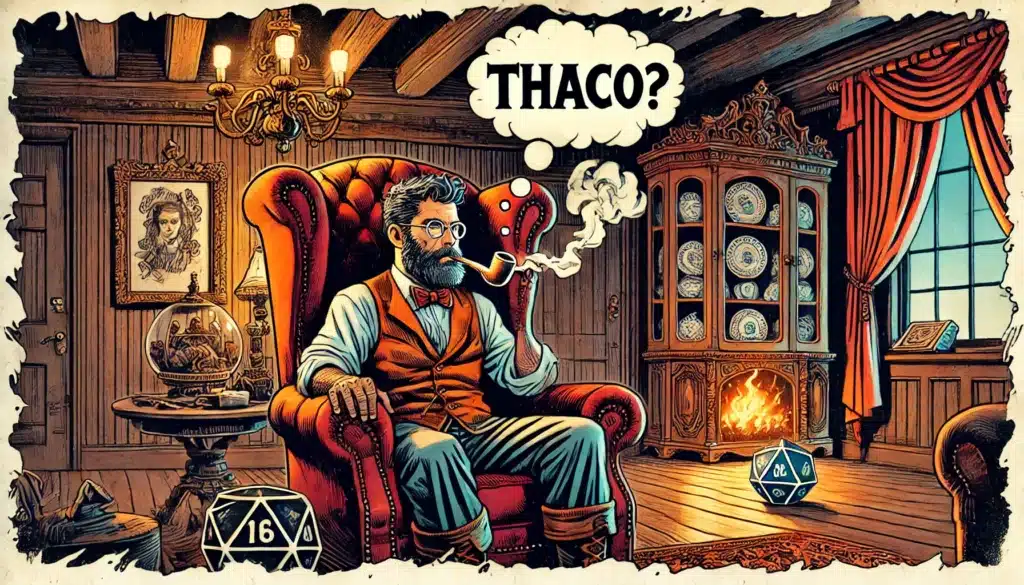
The “Filtered Sandbox” Approach: Giving Players Freedom Within Limits
With the “Filtered Sandbox” approach, DMs can offer players the illusion of boundless creativity while quietly maintaining control behind the scenes. It’s about boundaries—clearly defined spaces where players can exercise their creativity, yet know where the lines are drawn. This method allows the DM to guide the story, weaving in player ideas without unraveling the main plot.
- 1. Pre-Established Themes: Set the tone and theme of the campaign early. Players should know whether they’re in a dark, gritty world or a lighthearted romp.
- 2. Secret Player Prompts: Use prompts that guide players towards certain outcomes without them realizing it. A note found on an enemy or an overheard rumor can spark ideas already aligned with the campaign.
- 3. Narrative Deep Dives: Allow players to explore their backstories, but within the campaign’s context. They’re free to add depth, but it must tie into the world at hand.
- 4. Session Zero Discussions: Before the campaign begins, hold a session zero to discuss boundaries and player expectations. This sets the stage and prevents unrealistic ideas from taking root.
- 5. Collaborative World-Building: Let players design parts of the world, like a hometown, as long as it fits within the established setting.
- 6. Defined Boundaries: Clearly communicate what’s off-limits and why. Having set rules helps players express creativity without derailing the campaign.
- 7. Set Encounter Parameters: Allow players to plan tactics and strategies within encounters but keep the final say on enemy actions and outcomes.
- 8. Player-Driven Side Quests: Incorporate side quests based on player ideas, keeping them tangential to the main plot, so they enhance rather than distract.
- 9. Controlled Narrative Twists: If a player suggests a plot twist, decide how it can be molded to fit your narrative arc subtly.
- 10. Open Feedback Channels: Regularly check in with players to gather thoughts on the campaign’s direction without committing to every idea.
- 11. Guided Character Development: Support character growth by aligning player goals with the campaign’s overarching narrative.
- 12. Subtle Integration: Integrate player ideas in small ways, such as a recurring NPC or hidden messages, ensuring they enrich rather than overwhelm the story.
By employing these techniques, DMs can keep players engaged and invested in the campaign while maintaining the control necessary to tell a compelling story. Balance is key—it allows a campaign to be both player-driven and directionally sound.
And there it is: the dance of structure and improvisation. It’s about knowing when to let players lead and when to subtly guide them back on course. It’s not about control but about crafting a story that feels shared yet purposeful. As we continue, let’s explore how to take those cherished player ideas and weave them into your story in ways that surprise and delight.
Stealing Player Ideas Without Letting Them Know
Ah, the art of stealthy integration. This is where you, the majestic DM, can take those brilliant player ideas, tweak them just so, and weave them back into the narrative—like a master thief returning a jewel to its rightful setting. But here’s the trick: you’re doing it subtly, without relinquishing the narrative reins. It’s the ultimate sleight of hand in storytelling.
How, you ask? Start by listening intently. Players drop nuggets of gold all the time, often without realizing it. It could be an offhand comment, a wishful musing, or a detailed backstory. Your job is to pick up on these, take them for a little spin around your creative workshop, and then integrate them seamlessly into your world.
Consider this: a player wants their character to have a long-lost brother. Simple, right? But you see potential—a narrative thread waiting to be spun into something larger. Maybe this brother is entwined with the villain, serving as a spy, complicating allegiances and emotions alike. By taking the core idea and adapting it to fit your grand narrative, you maintain control while giving players the satisfaction of seeing their ideas realized.
Here’s a quick glance at how you might pull this off:
| Player Idea | DM’s Tweak | In-Game Result |
|---|---|---|
| Secret brother | Brother is working with the villain | Unexpected alliance complicates moral choices |
| Magic artifact request | Artifact is cursed and sought by others | Quest to break the curse while being pursued |
| Home city destruction | City is besieged, but not irreparably so | Players defend, leading to potential rebuilding quest |
| Pet request | Pet has hidden powers, tied to world lore | Pet becomes key in unraveling a mystery |
| Forbidden romance | Romance is a pivotal political maneuver | Adds intrigue and a chance to sway alliances |
| Strange dream | Dream foreshadows future campaign events | Adds an element of prophecy and fate |
| Rival adventurer | Rival is a pawn in a larger scheme | Turns from enemy to ally against a greater threat |
| Local festival | Festival is cover for a secret operation | Mixes celebration with clandestine activities |
| Disputed treasure claim | Claim involves a contested inheritance | Introduces new NPCs and potential allies/enemies |
| Brigand encounter | Brigands are rebels with a sympathetic cause | Moral dilemma: fight or join their cause |
The beauty of this method is that it keeps players engaged and invested without letting them dictate the plot. They feel their ideas matter, sparking excitement and anticipation as they watch their brainchildren come to life within the game.
But always remember: this isn’t about trickery—it’s about collaboration. It’s about crafting a narrative together where players feel their input adds value, enriching the shared storytelling experience. Now, let’s unfold the final chapters of wisdom from our dear grumpy Dave as we delve into how to balance control and creativity without breaking a sweat.

Dave’s Rules for Keeping Player Ideas Under Control
Let’s face it: while player input is a valuable asset, there’s still a campaign to run, and someone has to wear the crown. That’s where the importance of DM authority comes in, and Dave, our grumpy Dungeon Master, has a few rules on keeping player ideas from running wild.
First, remember that the DM is the anchor of the campaign, grounding the storyline when the waters get a bit too rough. The essential role of a DM is akin to a ship’s captain—guiding the players through the stormy seas of creativity, ensuring no one gets washed overboard by a rogue wave of poorly thought-out ideas. A good crew understands the importance of clear communication and collaboration, making the journey smoother for everyone involved. As players, it’s vital to recognize the challenges your DM faces and offer your insights and creativity in ways that enhance the narrative. Learning how to support your DM effectively can transform the experience for the entire group, creating a rich tapestry of storytelling that everyone can enjoy.
⚔️ Fantasy RPG Random Tables Books
Make life as a Gamemaster easier…
If you play Dungeons & Dragons, Pathfinder, or other fantasy RPGs, this
RPG random tables series
is packed with encounters, NPCs, treasure, and more. Available in eBook or print—either way, you’ll have a wealth of adventure ideas at your fingertips.
Try my AI Tabletop RPG generators...and an extensive library of content!
It’s crucial to have structured storytelling. Think of it as the secret sauce that holds the campaign together. Without structure, you’re left with a buffet of mismatched plotlines that, while potentially interesting, don’t quite satisfy the narrative hunger. A DM must be the guardian of the overarching plot, ensuring that every idea, no matter how small, aligns with the story’s theme and direction.
But here’s the catch: Balance. It’s not about dictating every move but rather guiding the players while allowing them enough space to forge their own paths. Maintaining this balance ensures the story remains engaging and dynamic, with enough surprise and predictability to keep everyone hooked.
Dave’s rules boil down to this: wield your authority with grace and wisdom. You’re not just the storyteller but also the guide, the anchor, and sometimes, the referee. By establishing a clear structure and being open to player input—but with a discerning ear—you can craft a campaign that is both controlled and exciting.
Now, let’s further explore how to say “no” with finesse when an idea simply doesn’t fit the grand narrative.
“Not Every Idea is a Good Idea” – How to Say No Without Ruining the Fun
In the world of tabletop gaming, not every idea is a gem deserving of a place in the story. Sometimes, players come up with suggestions that, while creative, just aren’t a good fit for the narrative. But when it comes to saying no, tact is key—especially if you don’t want to squash the enthusiasm or hurt feelings.
Start by offering alternatives. When a player suggests something off-the-wall, don’t just shut it down. Instead, propose a different angle that fits better with the campaign’s theme. This way, they still feel heard, and you’ve preserved the story’s integrity.
Another method is to divert the idea into a side quest. If a player insists on a particular storyline that doesn’t mesh with the main plot, consider making it a standalone adventure. It can be a fun detour without derailing the primary narrative.
Here are some more graceful ways to handle those not-so-great ideas:
- 1. “Let’s explore this in a different setting.” Redirect the idea to a parallel campaign or a future setting where it might fit better.
- 2. “How about we tweak this?” Suggest changes that align the idea more closely with the story.
- 3. “That’s interesting, but it might disrupt the balance.” Explain the potential pitfalls and collaborate to find a balanced approach.
- 4. “We can incorporate it as a rumor.” Use the idea as background lore or a rumor, adding depth without changing the main story.
- 5. “Timing is everything.” Promise to revisit the idea at a later stage when it might naturally fit into the campaign.
- 6. “Let’s table this for now.” Politely postpone the idea, allowing time for further consideration or integration.
- 7. “Maybe in a one-shot?” Suggest exploring the idea in a one-shot scenario where it can shine independently.
- 8. “I’m concerned about consistency.” Highlight the importance of maintaining a consistent world, and seek a modified version that fits.
- 9. “Could this work in a dream sequence?” Use the idea in a dream or illusion, allowing it to unfold without affecting the larger story.
- 10. “Let’s brainstorm some more!” Encourage further brainstorming, which might lead to an even better concept.
- 11. “The lore doesn’t support it.” Cite the campaign’s established lore, and encourage them to adjust the idea accordingly.
- 12. “We’re near a plot juncture.” Explain the current plot’s direction, and explore how their idea can be integrated later.
- 13. “Consider the character’s development.” Discuss how the idea ties into or disrupts their character arc.
- 14. “I love the creativity!” Praise their creativity before guiding them back towards a more fitting concept.
- 15. “We’re reaching complexity limits.” Mention the current complexity of the campaign, aiming to keep things manageable.
By employing these strategies, you can gently steer players away from ideas that don’t quite fit while still preserving their enthusiasm for the game. After all, the goal is to maintain a lively and engaging experience for everyone involved.
And remember, while it’s important to maintain narrative control, it’s equally important that players feel their ideas are valued. The art of saying no, then, is to reject the idea, not the person. Let’s delve deeper into using player ideas in a way that maximizes their impact without overshadowing the story.
The “Use It Later” Trick – Delaying Player Ideas for Maximum Impact
Ah, the beauty of timing—this is where a DM’s patience truly shines. Not every player idea needs to be used immediately, nor should it be. Sometimes, storing those nuggets of creativity for a rainy day can turn a good campaign into a great one. This is the “Use It Later” trick—holding onto player suggestions and waiting for the perfect moment to unleash them.
Imagine saving that storyline a player suggested about a hidden kingdom. Instead of dismissing it, you file it away with the intention of bringing it back at just the right time—when it can cause the most excitement and drama. This approach not only acknowledges the player’s creativity but also enhances the campaign with unexpected twists and turns.
Consider the following table to see the magic of delayed introduction:
| Player Idea | How to Delay Introduction | How It Pays Off Later |
|---|---|---|
| An ancient artifact | Introduce rumors and myths over time | Artifact appears as a key plot device |
| A prophecy involving a player | Mention vague predictions early on | Prophecy unfolds in a climactic battle |
| Rival character storyline | Have the rival appear sporadically as a foil | Rival becomes a crucial ally against a common foe |
| Enigmatic NPC’s background | Drop subtle hints and clues | NPC’s full story is revealed to turn the tide |
| Exploration of a forbidden area | Introduce barriers and challenges first | Area becomes accessible and reveals hidden secrets |
| Secret society involvement | Mention in passing, build intrigue | Society becomes central to a major arc |
| Character’s former ally returns | Leave breadcrumbs of their existence | Ally returns at a moment of great need |
| A mystical phenomenon | Sporadic sightings, increasing in frequency | Phenomenon is key to solving a major mystery |
| A lost relic from the past | Legend grows over several sessions | Relic reappears with significant implications |
| New class or race discovery | Introduce cultural lore gradually | Discovery becomes vital to the campaign’s future |
The essence of this approach lies in the power of anticipation. By storing great ideas and releasing them at the perfect moment, you transform the element of surprise into a storytelling superpower. This not only keeps the story fresh and unpredictable, but it also maintains player investment. They’ll be excited to see how their earlier ideas are interwoven into the narrative fabric.
Timing, my fellow DMs, is everything in crafting an unforgettable campaign. By holding a player’s idea in reserve, you build suspense and ensure the payoff is well worth the wait. Now, onward to understanding how player buy-in is the secret ingredient in making their ideas shine.
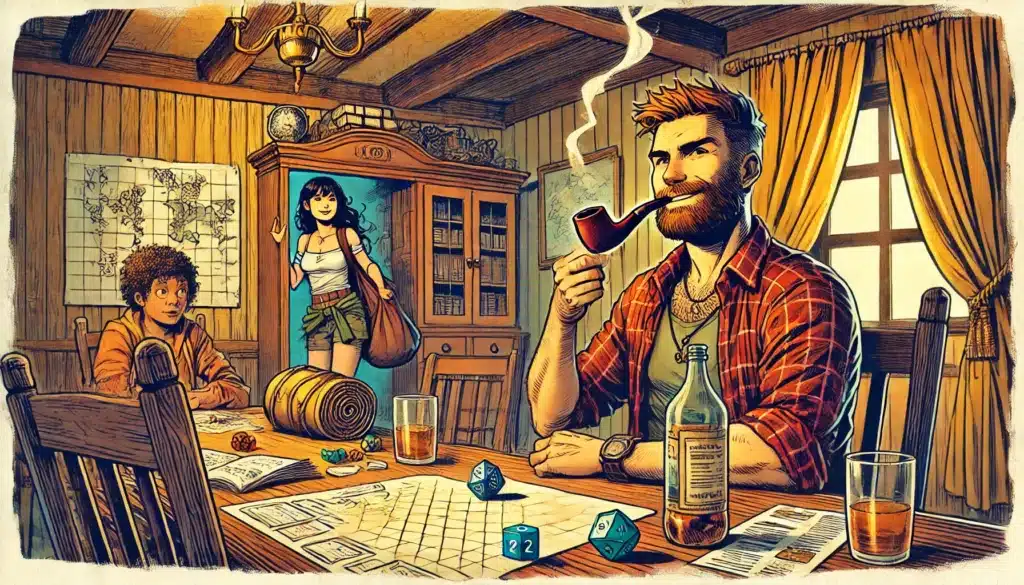
Player Buy-In: The Secret to Making Player Ideas Work
Player investment is truly the lifeblood of an engaging campaign. It’s not enough to simply nod at every suggestion and tweak every plot point. True engagement comes when players feel that their ideas, while not always accepted wholesale, are valued and considered—when they feel like stakeholders in the story. And here’s the secret: it’s about perception as much as reality.
When players feel their contributions matter, they commit emotionally to the unfolding drama. Suddenly, every decision feels weighty, every victory hard-won, and every twist an echo of their own influence. The campaign becomes a shared enterprise rather than a tale spun by a single mind. So, how do we cultivate this precious buy-in from our adventurers?
First, constant communication is key. Regular check-ins with players to see their thoughts on the campaign’s trajectory ensure they feel heard. Even if their ideas aren’t implemented verbatim, knowing their voice reaches the DM’s ears fosters a sense of ownership. And while you’re in charge, make sure to sprinkle moments of player-driven brilliance throughout. When players see their ideas subtly reshaping the narrative landscape, they’re more likely to dive deeply into the story.
Another strategy is to create moments where players can directly influence the world—for instance, through quests or challenges born from their backstories or desires. These personal touches are like adding seasoning to a dish, transforming something good into something unforgettable.
In short, player buy-in is about crafting an environment where players feel their ideas could be the key to unlocking great moments. The campaign becomes a tapestry woven with threads of individual contributions.

Making Players Feel Like Their Ideas Matter (Even When They Don’t)
The art, dear DMs, lies in making players feel their ideas are integral to the campaign, even when they’re not directly steering the ship. It’s a bit of psychological wizardry, really—a sleight of hand where you make players believe they hold the entire magic of the story in their grasp.
One way to achieve this is by providing the illusion of choice. Players love feeling in control, even if the options lead to predetermined outcomes. It’s akin to a well-crafted maze, where every path eventually leads to a grand reveal. Of course, this doesn’t mean railroading. Instead, think of it as curating options that all tie back to the narrative arc you’ve planned.
Consider these techniques for creating that magical illusion:
- 1. Preloading Campaign Options: Prepare multiple paths with hooks for character-driven stories. This way, no matter what they choose, it aligns with the grand plan.
- 2. Adjust Encounters Behind the Scenes: Shift enemy strengths or tactics based on player choices, ensuring balance while maintaining suspense.
- 3. Subtly Guide Players: Use NPCs or in-world events to nudge players toward specific outcomes, maintaining their illusion of control.
- 4. Alternate Endings: Have multiple scenarios planned depending on choices, all leading to equally satisfying conclusions.
- 5. In-Game Feedback: Let the world react dynamically to player decisions, showing their influence without changing the core story.
- 6. Minor Plot Integrations: Seamlessly include player ideas as side stories or minor plot points, enhancing the feeling of impact.
- 7. Rotating Character Spotlights: Focus on different characters’ backstories or ideas each session, keeping everyone engaged.
- 8. World Evolution: Drop subtle story changes reflecting player actions, reinforcing their hand in shaping the world.
- 9. Hidden Rewards: Place small rewards or acknowledgments tied to player ideas, encouraging further contributions.
- 10. Lore-Based Decisions: Encourage players to use world lore in decision-making, integrating their ideas into the campaign’s history.
- 11. Storytelling Through Combat: Use battles to tell part of the story, hinting at deeper connections to player suggestions.
- 12. Symbolic Gestures: Introduce symbols or recurring themes linked to player ideas, making them more central to the campaign.
⚔️ Fantasy RPG Random Tables Books
Make life as a Gamemaster easier…
If you play Dungeons & Dragons, Pathfinder, or other fantasy RPGs, this
RPG random tables series
is packed with encounters, NPCs, treasure, and more. Available in eBook or print—either way, you’ll have a wealth of adventure ideas at your fingertips.
By employing these methods, you create an environment rich in perceived player influence while maintaining the structured story you’ve envisioned. Players end up feeling that their choices carry weight, even when they’re part of a larger tapestry.
And that’s the secret sauce of a successful campaign: keeping the illusion alive. Players stay captivated by the belief that their ideas matter, engrossed in a story that feels both personal and expansive. Let’s explore testing player ideas on a smaller scale in the next section to ensure they enhance the campaign without derailing it.
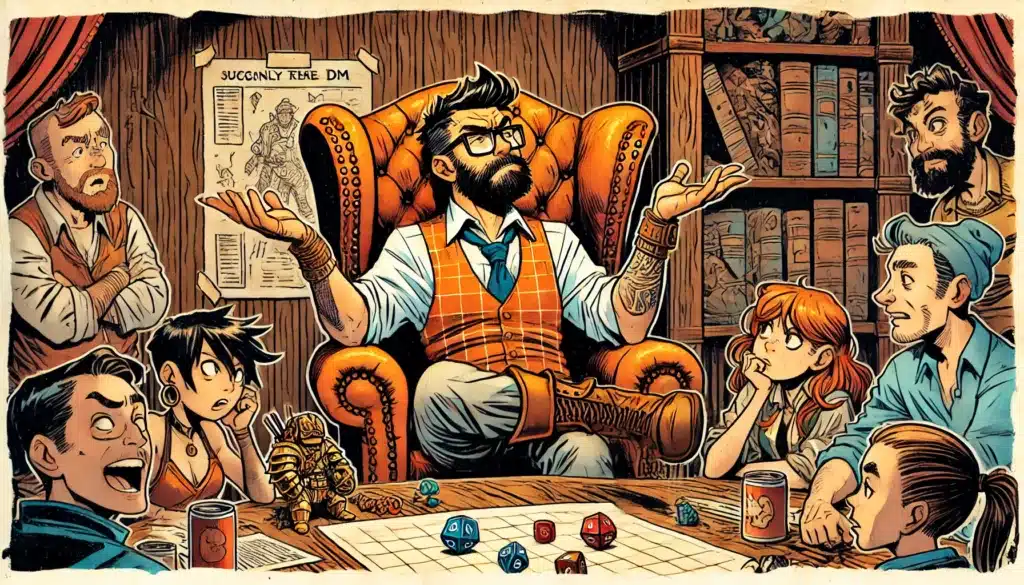
Testing Player Ideas Before Fully Committing
Before diving headlong into incorporating player ideas into the heart of your campaign, consider giving them a trial run. A test drive, if you will. This allows you to gauge the idea’s potential impact without risking the narrative’s stability. By experimenting with new concepts on a smaller scale, you can determine if they enhance the story or need further refinement.
Think of these trials as lifting the hood on a new vehicle. You’re checking the mechanics—making sure everything runs smoothly before hitting the open road. This approach not only safeguards the campaign’s integrity but also reassures players that their ideas are valued enough to be explored.
To make this method effective, consider the following table of trial run methods:
| Player Idea | Trial Run Method | Possible Campaign Integration |
|---|---|---|
| A mysterious artifact | Introduce as a temporary quest item | Use as a catalyst for a larger plot |
| Shadowy ally | Reveal their influence in a minor subplot | Promote them to a key narrative player |
| Unusual magical ability | Allow temporary access in a specific battle | Incorporate as a critical skill in a future arc |
| Abandoned ruin exploration | Use as a short, self-contained dungeon | Connect to a major storyline through discovered relics |
| Rising political faction | Showcase their influence in a local setting | Expand to become a significant power in the region |
| Cursed item | Introduce as a minor plot obstacle | Expand curse to affect a primary narrative thread |
| Unfamiliar creature encounter | Use in a small scale skirmish | Integrate into a major conflict or broader ecology |
| A village in distress | Present as an isolated event | Link to a hidden threat affecting the region |
| Ancient prophecy | Mention in passing during side quests | Elevate to a prophecy driving main plot |
| Planar gateway | Allow brief exploration in a side quest | Integrate as a major plot device in the main story |
| Exotic NPC | Introduce in a transient role | Develop into an ally or antagonist with depth |
| Cultural festival | Frame as a minor celebratory event | Use as a backdrop for pivotal plot developments |
By testing player ideas in this way, you allow the story to remain agile while ensuring new elements blend harmoniously with your vision. Players feel appreciated when their contributions are explored, and you maintain the narrative balance needed for a coherent campaign.
This method prevents campaigns from spiraling into chaos due to untested ideas. It ensures that player input is more than just a flash in the pan, becoming an integral part of the story’s fabric. Let’s conclude with Dave’s final thoughts on achieving the delicate balance between structure and creativity.

Dave’s Final Thoughts: The Balance Between Structure and Chaos
So, here’s the rub: while Dave may be a grumpy old-timer, he’s seen enough campaigns to appreciate the delicate dance between structure and chaos. He’s learned that the best stories—those unforgettable campaigns that players talk about for years—blend the solid foundation of world-building with the vibrant colors of player input.
The secret lies in creating a story that feels alive yet coherent, a narrative that resonates with everyone at the table. It’s about giving players enough room to breathe while maintaining the structure that keeps them engaged. And Dave? He’s a master at this balancing act, proving that even the grumpiest DM can find room for a little player-driven magic.
The key takeaway from our dear friend Dave is this: don’t fear the chaos; embrace it, but do so with wisdom and control. Players want to feel that their ideas shape the world, and by cleverly weaving their suggestions into the narrative, you hypnotize them into thinking they hold the reigns of storytelling.
But, keep that golden backbone of structure firmly in place. It’s the guide rope that tethers the campaign to a central narrative, ensuring that all these fantastical journeys eventually lead back to a satisfying crescendo.
In the end, remember—this isn’t just your story; it’s theirs as well. The best campaigns are collaborative masterpieces, where players contribute threads to a tapestry masterfully guided by the DM. And that, dear readers, is how you harness the chaos and create something truly magical. So go forth, spill some dice, and let the games begin with newfound insights as your guide.

